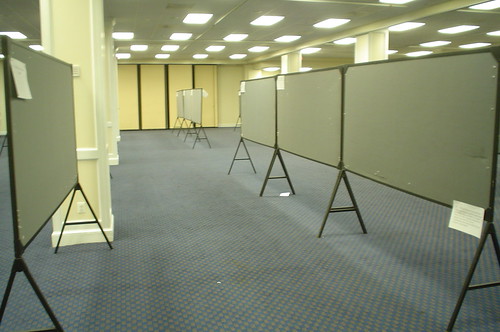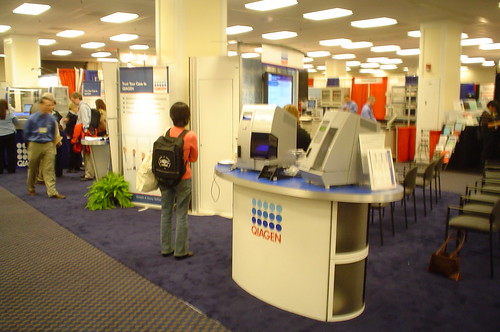
found by troym; comments by blogger jgl
Interesting. I hadn't heard anything about this until Troy sent it in. It is the quick DNA test everyone has been looking for, except this one doesn't use DNA! And everyone thought anitbodies were so 1980s...
| Identity Sciences, LLC (IDS), with its strategic science partner the Idaho National Laboratory (INL), has been awarded a 2008 R&D 100 Award for AbP ID(TM), a new groundbreaking forensic human identification test. The new product, scheduled to be available to forensic labs in late 2009 or early 2010, will be used as a screening tool for DNA and can deliver accurate, reliable results in as little as two hours... ...The Chicago Tribune calls the award "The Oscars of Invention." Previous winners include the fax machine, the Automated Teller Machine (ATM), the cancer drug Taxol, the Nicoderm anti-smoking patch and HDTV... ...The AbP ID test analyzes Individual Specific Auto-antibodies (ISAs), found in all human body tissues and fluids. It is unlike the current standard forensic testing method which reads DNA in human cells. The AbP ID test can determine whether the antibody profile of the evidence found at a crime scene matches the profile of a suspect. The initial product release will use blood serum and dried blood, and will provide results in just two hours. Other AbP ID tests which are now in development will use semen, saliva and perspiration, delivering results in less than five hours. |
I'm trying to think when screening would be useful. For all evidence samples, I'm assuming DNA would be analyzed anyway. Plus, I'm wondering how much sample would be needed to run one of these tests. I suppose they could be used to screen suspects quickly. But would a "no match" mean absolute exclusion, not requiring a DNA "double check"?












